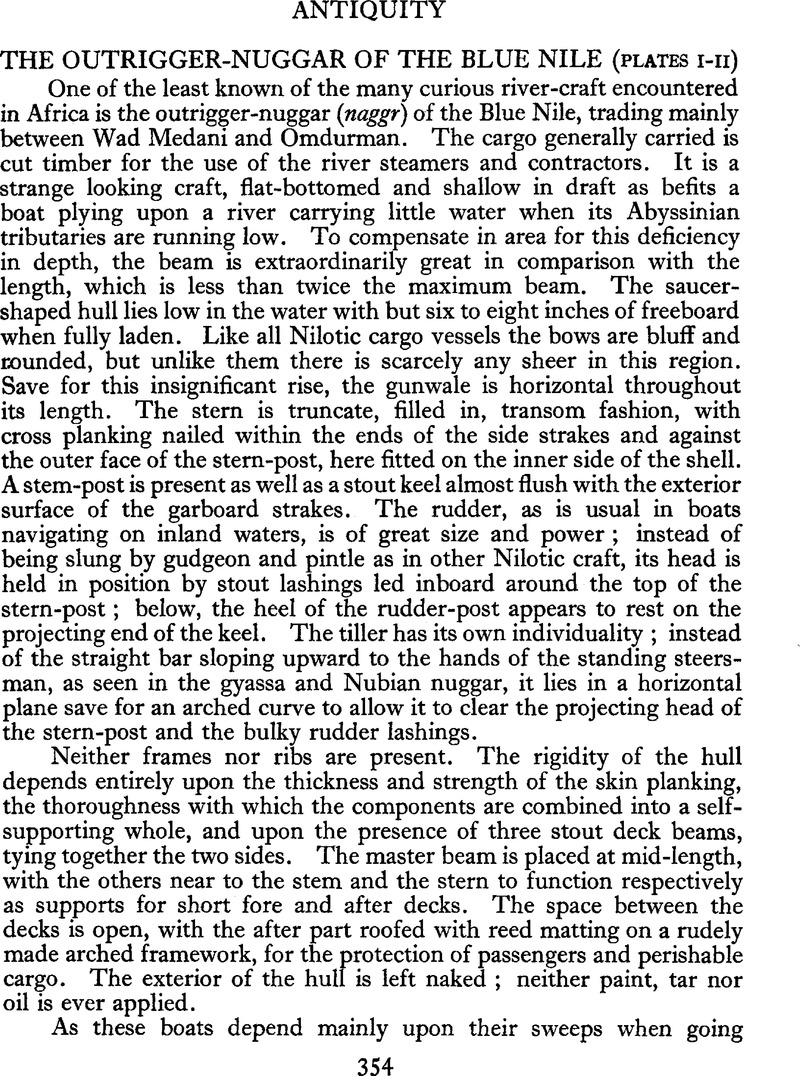No CrossRef data available.
Published online by Cambridge University Press: 26 May 2015

1 In nuggars built north of Wadi Halfa a few frames are inserted during construction; this is an innovation due to culture contact. Even so, itmust be noted that the frames are put in after and not prior to planking up the sides ; also,that no inner skin is provided.
2 Prudhoe, Lord ‘Extracts from private Memoranda … on journey from Cairo to Sennar in 1829 …’ fourn. of the Royal Geographical Society of London, 1835, 5 58.Google Scholar
3 Until Ismail Pasha's, conquest of the Sudan in 1820, no planked boats were in use on the Nile south of Khartoum apart from some canoes with side planks added.Google Scholar
4 Somers Clarke, , ‘Nile Boats andother Matters,’ Ancient Egypt, 1920, pts. I and II.Google Scholar
5 Prudhoe, Lord, loc. cit., p. 57.Google Scholar
6 ibid. 58.
7 ‘Russian Barges,’ The Mariner’s Mirror, 1931, 17, 189.Google Scholar
8 Hornell, J., ‘The Tongue and Groove Seam of Gujarati Boatbuilders,’ The Mariner’s Mirror, 16, 309–12.CrossRefGoogle Scholar
9 Haddon, A.C., and Hornell, J., The Canoes of Polynesia, vol. 1, fig. 110.Google Scholar
10 Mast and Sail in Europe and Asia, p. 297, 1906. His words are :- — ‘In coming northward down river, and against the prevailing wind, they [the nuggars] are fitted with outriggers and long sweeps, and row double–banked—the men stand to their work facing forward.’Google Scholar